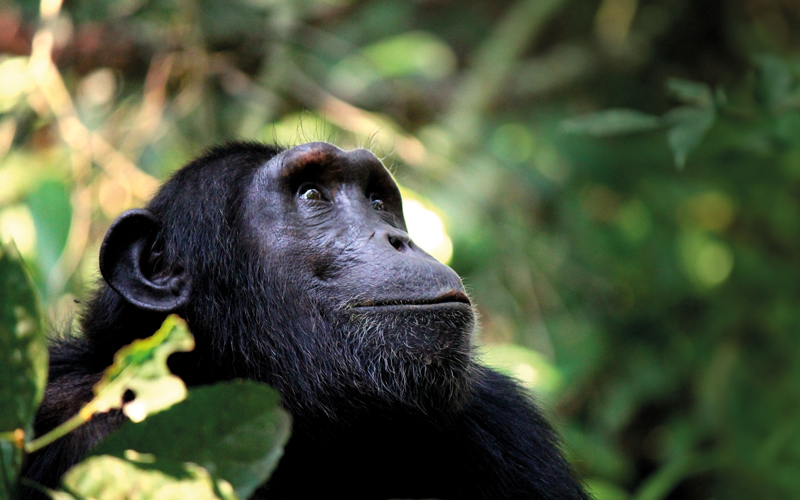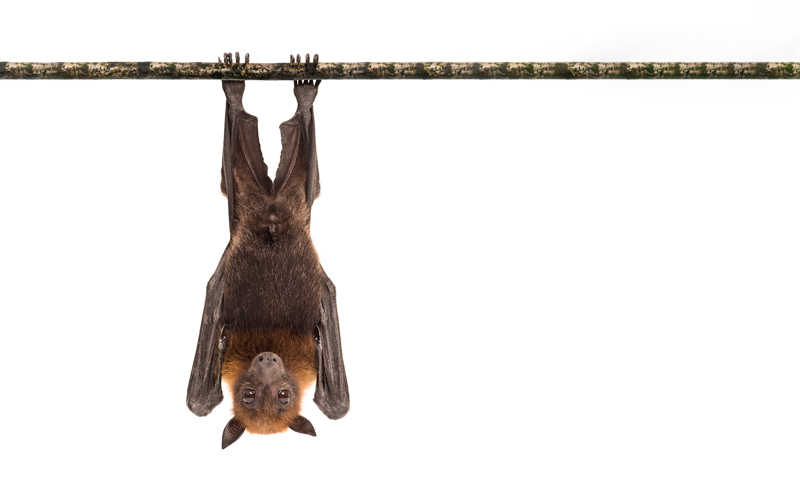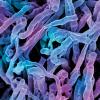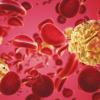Cedric Tan, a computational biologist specialising in microbial (meta)genomics, discusses his recent viral genomes study.

At a glance
- Roughly twice as many host jumps were inferred to be from humans to other animals, than the other way round.
- The research team analysed nearly 12 million viral genomes that have been deposited on public databases to date.
- They found viruses with broader host ranges may possess traits that make them inherently more capable of infecting a diverse range of hosts.
Cedric Tan and his research team at the UCL Genetics Institute and the Francis Crick Institute have been working on some major analyses of viral genomes that could fundamentally change the way we think about infectious diseases.
For a new paper in Nature Ecology and Evolution, the team analysed all publicly available viral genome sequences, to reconstruct cases where viruses jumped from one host to infect another vertebrate species.
Most emerging and re-emerging infectious diseases originate from viruses that naturally circulate in animals. However, when these viruses cross over into humans, they can lead to outbreaks, epidemics and pandemics, such as Ebola, flu or COVID-19.
Animal-to-human disease transmission
While some previous studies have examined the way that viruses are passed from wild and domestic animals to human populations (zoonosis), these have largely been looked at from an ecological perspective. Little light has been shed on the evolutionary drivers behind these events, so there is limited knowledge to effectively predict, prevent and manage future infectious disease threats.
Tan and his research group have strived to fill this void, making use of existing genomic databases, a largely untapped resource, to gain insight into the evolutionary processes surrounding viral host jumps.
Set in the context of a post-pandemic world, Tan appreciates the imminent need for such research. “Our work started when the pandemic struck. COVID-19, caused by the SARS-CoV-2 virus, was believed to have originated in bats, and passed through to humans at some point. It is vital to examine how infectious diseases emerge for humans and animals, and the patterns involved in these events,” says Tan.Elaborating further, Tan explains, “Zoonosis is just one speciality of viral host jumps. Animals pass infectious disease in the same way that humans do, through bodily fluids. When humans encounter these fluids, we can get infected with animal-borne viruses that develop into full-blown symptomatic diseases. Animal-to-human transmission can then transform into human-to-human transmission, which can really be disastrous.”
A new way of looking at viral host jumps
Considering the enormous impact of zoonotic diseases on public health, humans have generally been thought of as a sink for viruses rather than a source. Through their analysis of nearly 12 million viral genomes deposited on public databases, the UCL research team unintentionally noticed a surprising pattern – roughly twice as many host jumps were inferred to be from humans to other animals, than the other way round.
“Using these publicly available bio-genomes, we built over 200 genetic trees of viruses that reflected their evolution over time. We then used the host information of viruses to reconstruct ancestral host trees, to infer the likely host jumps that have occurred in the past,” says Tan. “Through our analysis, we were able to look more broadly at the relative frequency of viral host jumps between different species, and noticed that humans were in fact more of a source than a sink for viruses.” Tan explains that it is more helpful to think of humans as just one node in a vast network of hosts endlessly exchanging pathogens, not just a sink for zoonotic bugs.
“As an analogy, imagine a country with multiple towns and cities, with people endlessly travelling between. Some are highly connected, others are more obscure, with people staying put. Similarly, some hosts are more interconnected and can more effectively govern the flow of viruses from different sources, while other host species tend to harbour their own viruses within their own populations with far fewer host jumps occurring.”
Future disease outbreaks & conservation
The team’s research highlights a key underappreciated fact – that viruses frequently spread from humans to wild and domesticated animals. Understanding this better, by surveying and monitoring the transmission of viruses between different host species, in either direction, can help us to become more prepared for future outbreaks and epidemics of new diseases.

The study also reveals that, on average, viral host jumps are linked with an increase in genetic changes, or mutations in viruses, relative to their continued evolution alongside just one host animal - emphasising how viruses must adapt to better exploit their new hosts.
“We noticed that humans were in fact more of a source than a sink for viruses”
“Viruses that can infect a broad range of host species may have some inherent properties, making them more capable of jumping to new hosts as and when they like,” explains Tan. “These broad-host-range viruses have a higher chance of jumping to new species, with the potential to cause outbreaks in human populations, and so these are the viruses that we should target in future studies.
“For animals, the implications of our studies point to a threat to biodiversity conservation efforts, where endangered species could catch harmful human viruses. One example of this is the outbreak of the human common cold virus that occurred in chimpanzee populations in Uganda in 2016-17, an event that led to multiple mortalities.
“Not only this, but there may be new problems for humans by impacting food security if large numbers of livestock need to be culled to prevent a future epidemic, as has been happening over recent years with the H5N1 bird flu strain.
“Additionally, if a virus carried by humans infects a new animal species, the virus might continue to thrive even if eradicated among humans, or even evolve new adaptations before it winds up infecting humans again.”
To gain a deeper insight, the team are next planning to study host species that are most likely to contribute to the flow of disease between humans and wild animals. Tan adds: “We are also trying to find any characteristics of hosts that could contribute to modulating the flow of viruses. This is important because densely populated species, such as rodents, are more effective carriers of disease, and so efforts must be focused here. As well as this, we want to enhance our surveillance on endangered animals and these specific host species.”

Through continued research and collaboration between diverse disciplines, including genomics, epidemiology, and ecology, we can better understand host jumps and support the global public health effort to manage infectious disease.
Explore further
Read the paper in Nature Ecology and Evolution: bit.ly/3vUKLBm
A Biomedical Scientist cover feature on One Health: bit.ly/3UenC6v
Th IBMS HSD Virology reading list: bit.ly/4axmlNu
Cedric Tan is a second-year PhD student and computational biologist specialising in microbial (meta)genomics at University College London.
Image credit | iStock




